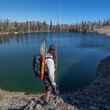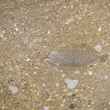Despite the fact that the Trump administration’s attacks on clean air, clean water, wilderness and public lands have been virtually relentless, they are most often buried beneath an avalanche of breathless news coverage about other topics which, by and large, serve to distract most of us from issues of enormous significance. This past week, however, two actions which represent the latest in the administration’s sweeping, ongoing efforts to rollback environmental regulations and open up more lands to fossil fuel extraction and mining briefly leapt to the forefront of the news cycle.
On Monday, David Bernhardt—the former oil and gas and water industry lobbyist who Trump appointed to lead the Department of Interior after his previous appointee, Ryan Zinke, resigned in disgrace amidst corruption allegations—signed a memo which named William Perry Pendley the acting director of the Bureau of Land Management (BLM). Pendley is one of the nation’s most ardent activists for the selling off of America’s public lands.
Then, on Tuesday, Trump’s EPA announced that it was withdrawing its own proposed determination to permanently prevent large scale, open-pit mining in the environmentally sensitive Bristol Bay region of Alaska. The move, though long predicted by many, creates further uncertainty regarding the future of the proposed Pebble Mine and its eventual impacts on the world’s greatest salmon fishery—which feeds the world with its annual harvest of over 60 million salmon, is the source of 14,000 American jobs and is a $1.5 billion per year economic engine for the state of Alaska.
Both actions caused panic in the hunting, fishing and outdoor recreation communities, particularly the EPA’s action surrounding Bristol Bay and Pebble Mine—which has become a the mantlepiece of environmental activism in the sporting community.
AN ETHICAL BREAKDOWN AT INTERIOR
Immediately after the appointment of William Perry Pendley, a private-sector lawyer and anti-public lands activist, to acting head of the BLM, conservation groups started sounding the alarm on what most described as a clear and present danger to America’s public lands heritage. But most hook-and-bullet conservation groups have remained silent, much as they have on many matters related to the Department of the Interior, including the questionable, conflict-laden appointments of former Interior Secretary Ryan Zinke and current secretary David Bernhardt and the myriad reports on the consistent, flagrant patterns of ethical violations and corruption that continue to plague the department.

In fact, while environmental groups have been particularly vocal regarding Trump’s appointments at the Interior Department, most of the groups who profess to defend the interests of anglers and hunters and protect wild habitat have either refused requests to comment or, bewilderingly, have gone out of their way to applaud them.
One exception is Backcountry Hunters & Anglers (BHA), helmed by CEO Land Tawney. Tawney, regarding Bernhardt’s appointment, told Hatch Magazine in February that “The Trump administration has established a goal of ‘energy dominance’ during the past two years, and Mr. Bernhardt has clearly played an important role in implementing that approach. ‘Energy domination’ means money first to me, and under that scenario our natural resources lose every single time.”
Tawney’s comments seems particularly salient now, in the light of Bernhardt’s appointment of Pendley to helm the BLM—a man who penned a 2018 editorial professing his opinion that America should sell off all of its public lands for private development, has said BLM lands are “supposed to be for ranching, mile, oil and gas, or energy activities”, called fracking a “miracle,” has accused the federal government of “waging war on the West”, and who only joined the BLM a little more than two weeks ago.
The importance of the BLM to clean air, water, dirt, wildlife and wild habitat—by virtue of the fact that it manages some 250 million acres of wild lands across the U.S. and is in charge of the federal government’s oil, gas and mineral leasing program—seems impossible to overstate.
Within hours of Pendley’s appointment, Tawney and BHA issued statements warning of the dangers of putting a career anti-public lands activist in charge of the BLM, warning that “The fox has taken control of the hen house, and he is poised to systematically dismantle the very resources he is charged with overseeing.” Tawney added, “There is no room for someone like Mr. Pendley as the head of a lands management agency tasked with overseeing nearly a quarter billion acres of our public lands.”

UNCERTAINTY LOOMS IN BRISTOL BAY
Pebble Mine should have died a long time ago. The flawed proposal to develop what was expected to become the world’s largest open-pit mine at the headwaters of the globe’s most productive sockeye salmon fishery—a mine that would lock millions of gallons of toxic waste behind a dam taller than both the Washington Monument and St. Louis Arch and which would need to be maintained for thousands of years in a highly earthquake-prone region of Alaska—seemed all but finished.
In 2014, after three years of exhaustive scientific research and review, the EPA delivered a final assessment on the expected impacts of a large-scale open-pit mine in the Bristol Bay region. Its conclusions were unequivocal. Just the construction of such a mine, the report concluded, would result in the total loss of almost 100 miles of salmon streams, a dramatic reduction in streamflows and the destruction of thousands of acres of crucial habitat. Once in operation, the report indicated a mine could deliver ongoing impacts from leakage during routine operations, wastewater treatment plant failures, spillway releases, culvert failures, pipeline failures, tailings dam failures, truck accidents and more—almost all of which it deemed “expected” or “likely.”
Based on the impacts detailed in the report, which the EPA deemed “irreversible,” the agency issued its proposed determination to block Pebble Mine under authority granted to it by section 404(c) of the Clean Water Act. The determination, once finalized, would essentially serve as a preemptive veto to any future attempt to move the Pebble project, or one like it, forward.
Alaskan natives, commercial fishermen, recreational anglers, conservationists and almost all of the hundreds of thousands of Americans that had sent written comments to the EPA in overwhelming opposition to the construction of Pebble Mine, rejoiced. Pebble’s two largest investors—mining companies Rio Tinto and Anglo American—fled, literally walking away from the project, with Rio Tinto donating its entire stake to charity. The Pebble Limited Partnership’s sole remaining investor and parent company, foreign mining company Northern Dynasty Minerals (NYSE:NAK), became a penny stock. After years and years of fighting, it seemed that Pebble’s opponents had finally won.
But the 2016 election changed everything. Not long into Trump’s first year in office, shortly after a private meeting with Pebble’s CEO, then EPA head Scott Pruitt advised his agency to begin the process of withdrawing the EPA’s proposed determination to block mining in Bristol Bay.


Given Pruitt’s history of suing the EPA to prevent and repeal environmental regulations and the Trump administration's stated pledge to open more American lands to fossil fuel and mineral extraction, the move came as little surprise. But only a few months later and just days after the Pebble Limited Partnership had finally filed permit applications for its mine (which it was granted permission to do under the terms of a legal settlement with the EPA), in a shock to both the mine’s opponents and Pruitt’s conservative allies alike, Pruitt reversed course and announced he was leaving the EPA’s proposed determination in place. According to Pruitt, the agency would wait for more information and review Pebble’s permit application.
In February, the Army Corps of Engineers delivered its draft Environmental Impact Statement (DEIS) on the mine detailed in Pebble’s permit applications. Almost immediately, Pebble’s opponents ridiculed the DEIS for its short-sightedness, incompleteness and the incomparably short timeline during which the government intended to accept public comments on the materials—describing such as an intentional effort to rush the project forward without proper review. The Pebble Limited Partnership, to no one’s surprise, disagreed, calling the Army Corps’ review a “clear path forward for success” and proof that the mine could be constructed and operated “in an environmentally responsible manner.”

Almost on the anniversary of Pruitt’s resignation—amidst, you guessed it, corruption scandals—the EPA agreed with those who had been sharply critical of the DEIS; with Pebble’s opponents. In two documents dated July 1, 2019, containing over 200 pages of comments, the EPA slammed the Army Corps’ analysis, claiming it had omitted crucial information about Pebble Mine’s potential effects on Bristol Bay and had underpredicted the impacts the mine could have on the region’s water quality.
In one instance, the EPA’s comments challenged the Corps to explain why only a “qualitative analysis” of Pebble Mine’s impact on surrounding wetlands was conducted, when the Corps had available to it “extensive data [which] was collected, particularly at the mine site.” Other EPA comments were similarly caustic, including criticism that the DEIS lacked even a “comprehensive analysis” of the distribution and abundance of fish species throughout the project area.
The Army Corps, EPA noted, states in the DEIS that “[s]pecies diversity and abundance data indicate there is sufficient available habitat for relocation without impacts to existing populations” but countered that the DEIS “[did] not appear to provide support for this statement,” did not present information on how the assessment was conducted and failed to even identify “what constitute[d] fish habitat.”
Perhaps most egregiously, the EPA highlighted the fact that the Army Corps’ DEIS failed to even address the very scenario that keeps most opponents of the mine up at night—a tailings dam breach like Canada’s Mount Polley mine disaster or Brazil’s Mariana and Brumadinho tailings dam failures, which the world witnessed in horror in recent years. The Army Corps’ review of the potential impacts of Pebble Mine, EPA noted, “does not evaluate a bulk tailing breach or failure.”

Throughout the documents, the EPA repeatedly levied similar sharp criticisms of the DEIS, each time calling into question the Army Corps’ methods, decision-making, and the lack of support for its conclusions.
“Given the substantial potential impacts and risks of the proposed project and weaknesses in the (draft EIS), the DEIS likely underestimates adverse impacts to groundwater and surface water flows, water quality, wetlands, fish resources, and air quality,” EPA Region 10 Administrator Chris Hladick noted in a letter accompanying the EPA’s comments.
The EPA’s harsh review of the DEIS may have given hope to the mine’s opponents that the agency would resume course on its preemptive veto of mining in the Bristol Bay region had EPA’s chief legal counsel, Matthew Leopold, not announced just days prior that the EPA intended to restart the withdrawal of its proposed determination. The memo indicating the EPA would resume consideration of withdrawing the proposed determination came the same day Alaska's pro-mining governor Mike Dunleavy met with Donald Trump aboard Air Force One, a meeting which was the last in a series of meetings between February and June of 2019 which included Leopold, Dunleavy and Trump. A former veteran of the Florida DEP known for stifling enforcement actions in the state, in March became the EPA’s lead decision maker on all matters related to Pebble Mine when both new EPA director and former coal lobbyist Andrew Wheeler and EPA water chief David Ross were forced to recuse themselves from Pebble-related matters due to previous private sector work for Northern Dynasty Minerals.
But despite the apparent conflict between the EPA’s stated intention to resume withdrawal of its 2014 proposed determination and its harsh review of the Pebble DEIS—a polarity Region 10 administrator Hadlick even acknowledged in his letter accompanying the EPA’s comments—on July 30, the EPA formally withdrew the 2014 proposed determination, stating that the EPA would now “focus on the permit review process for the Pebble Mine project.”


The withdrawal undoes years of consultation with native Alaskans and other residents, business owners, other local stakeholders, and years of scientific research that was widely described as one of the most transparent, highly peer-reviewed, inclusive scientific review processes ever undertaken by the EPA.
Of the decision, Nelli Williams, director of Trout Unlimited’s Alaska program, said “This foolish decision fails on all accounts. It neglects EPA's responsibility to protect human health and clean water, it ignores science-based criticism of Pebble's permit review by their own scientists and other agencies, and it is out of touch with the priorities of Alaskans and sportsmen and women.” Trout Unlimited’s CEO, Chris Woods, called EPA’s move an “unjustified and fundamentally boneheaded decision,” adding “we have spent $18 billion on unsuccessful efforts to try and recover salmon in the Columbia and Snake Rivers, meanwhile Alaska’s resource is outstanding and all we have to do to keep it intact is have the good sense to leave it alone. We will look at all options—including litigation—to protect Bristol Bay from large-scale industrial mining.”
For now, Pebble’s opponents are once again left to wait. And fight.
Update: this article was updated to include a citation regarding meetings between Donald Trump, Alaska governor Mike Dunleavy and EPA legal counsel Matthew Leopold.
WE HATE TO ASK, BUT ...
Hatch Magazine's independent conservation journalism depends on the support of readers like you. Please consider becoming a Hatch Magazine sustaining member by making a small monthly or one time donation. Your contribution will help fund more of the in-depth coverage you've come to trust.































Comments